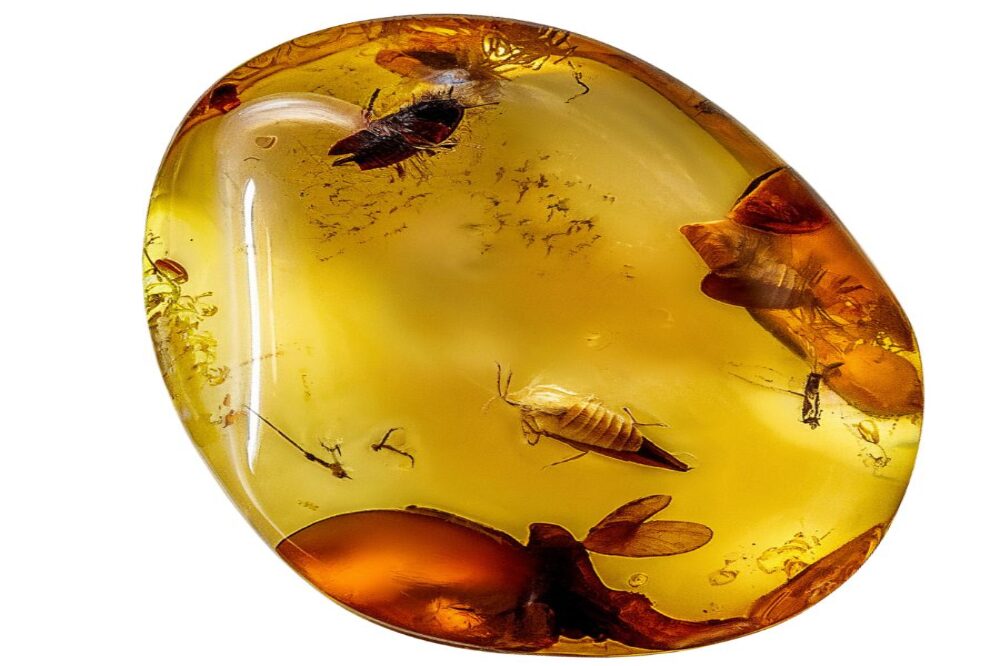Washington State is known for its stunning nature, and amber is one of its hidden treasures. This golden gemstone can be found in many places, from busy beaches to quiet, secret spots, offering a unique experience for treasure hunters.
Popular beaches like Black Rock Point and hidden gems like Dungeness Spit are great places to look for amber along the coast. These spots make for a perfect day trip or weekend getaway, with beautiful views and peaceful surroundings to enjoy while searching.
How Amber Forms Here
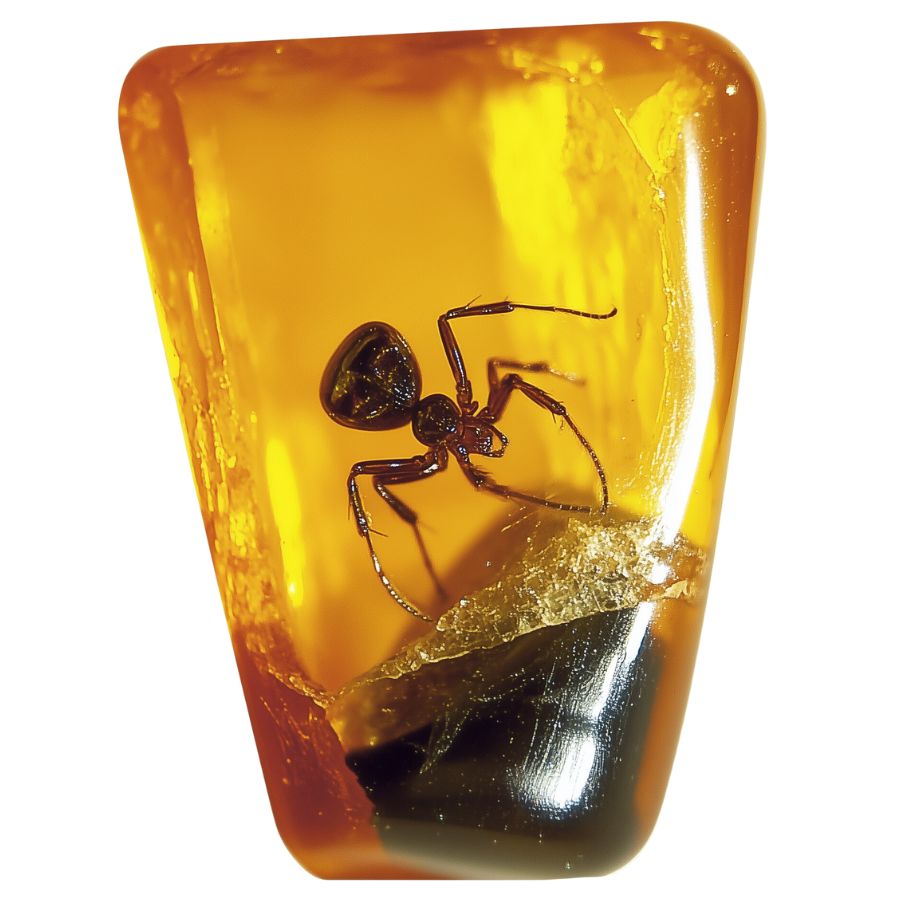
Amber begins its journey as sticky resin flowing from ancient trees millions of years ago. When insects or small plants got trapped in this golden liquid, they became perfectly preserved time capsules.
Over thousands of years, the resin hardens through a process called polymerization, where molecules link together to form larger, more complex structures.
As layers of sediment buried these hardened resin deposits, pressure and time transformed them into the gemstone we know as amber.
The process requires specific conditions: the resin must be protected from oxygen and excessive heat while maintaining steady pressure from surrounding rock and soil. That’s why we often find amber in sedimentary rock formations.
Types of Amber
You might think amber just comes in that classic honey color, but there’s actually an incredible variety of amber types out there – each with its own unique characteristics and formation story. Let’s dive into the most common ones you might come across.
Baltic Amber
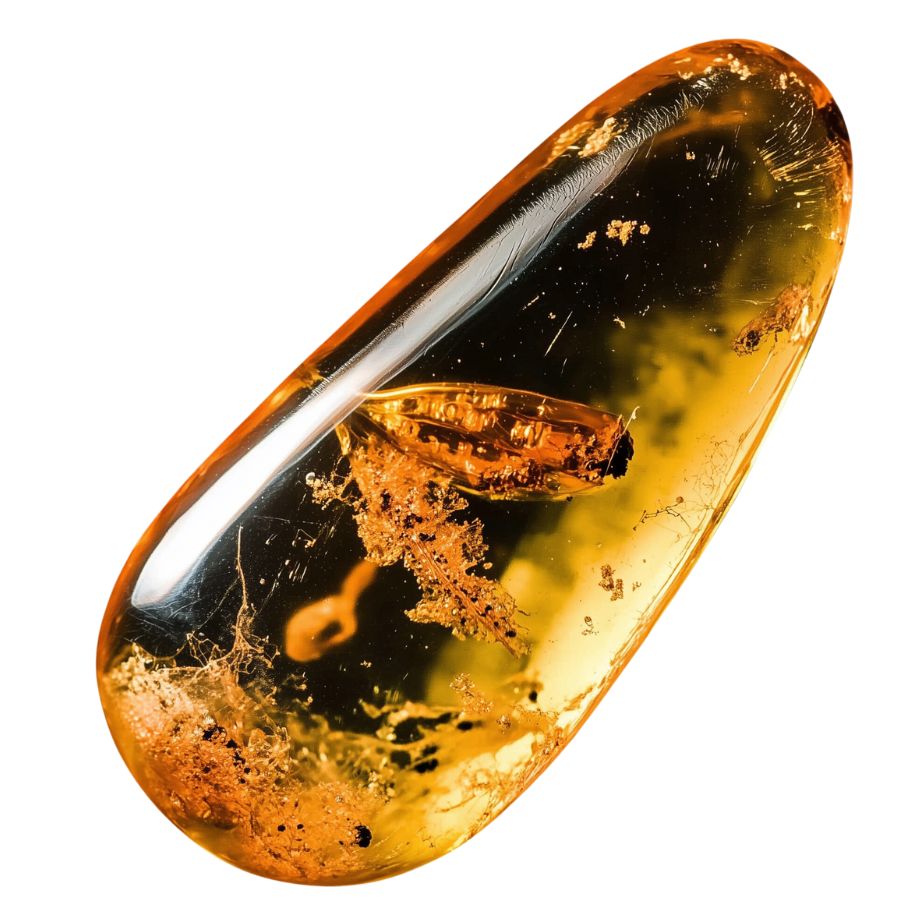
Baltic amber stands out with its warm spectrum of colors ranging from honey yellow to deep cognac brown. Its surface can be transparent enough to see through or completely opaque.
The chemistry of Baltic amber is quite remarkable. It contains high amounts of succinic acid, which isn’t found in other ambers. This unique chemical makeup gives it special properties, like generating static electricity when rubbed.
At 30-50 million years old, Baltic amber tells fascinating stories about Earth’s past. The resin came from ancient pine forests that once covered Northern Europe. The sticky resin trapped small creatures and plant parts, preserving them in incredible detail.
Many pieces show interesting patterns created by air bubbles and natural flow lines from when the resin first dripped down tree trunks. These patterns, combined with its natural warmth and glow, make each piece one-of-a-kind.
Dominican Amber
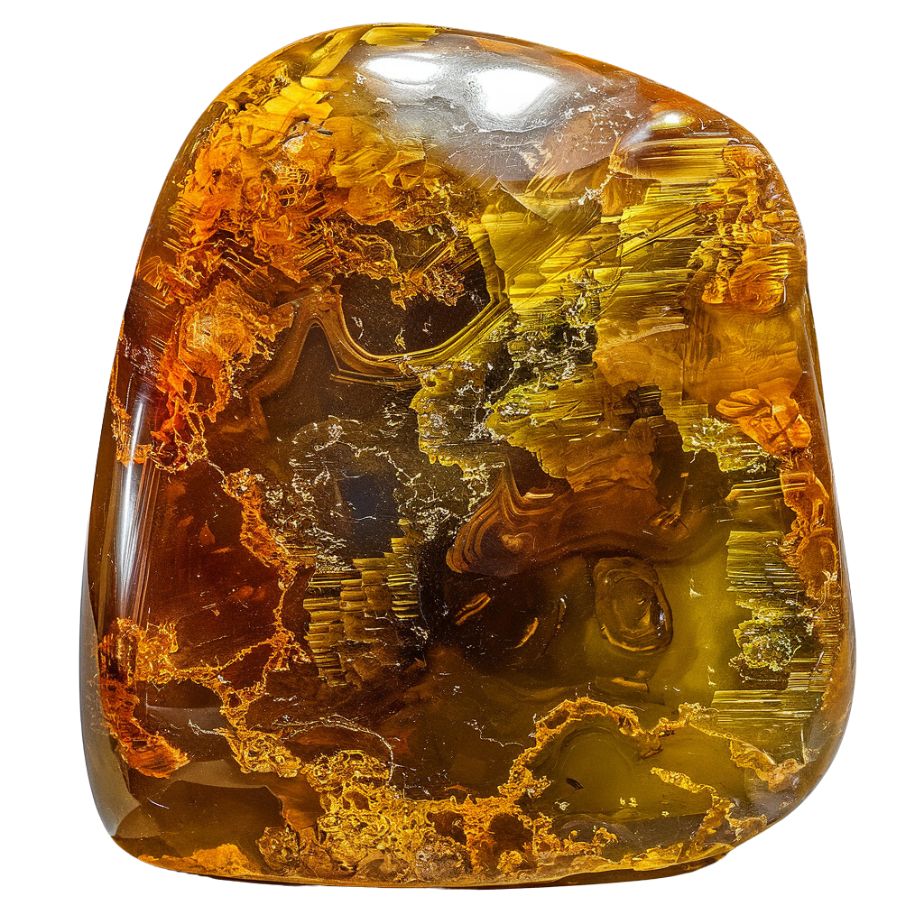
Dominican amber is famous for its exceptional clarity and brilliant colors. While most pieces show honey and cognac tones, some rare specimens display stunning blue and green hues. The transparency is so remarkable that you can clearly see tiny details of preserved insects and plants inside.
A special variety called blue amber makes Dominican amber truly unique. When held under sunlight, these pieces transform from a pale yellow to a brilliant blue color. This happens because of a special way the amber interacts with light – a feature not found in other ambers.
The amber dates back approximately 16 to 25 million years, making it one of the youngest types of amber available.
Mexican Amber
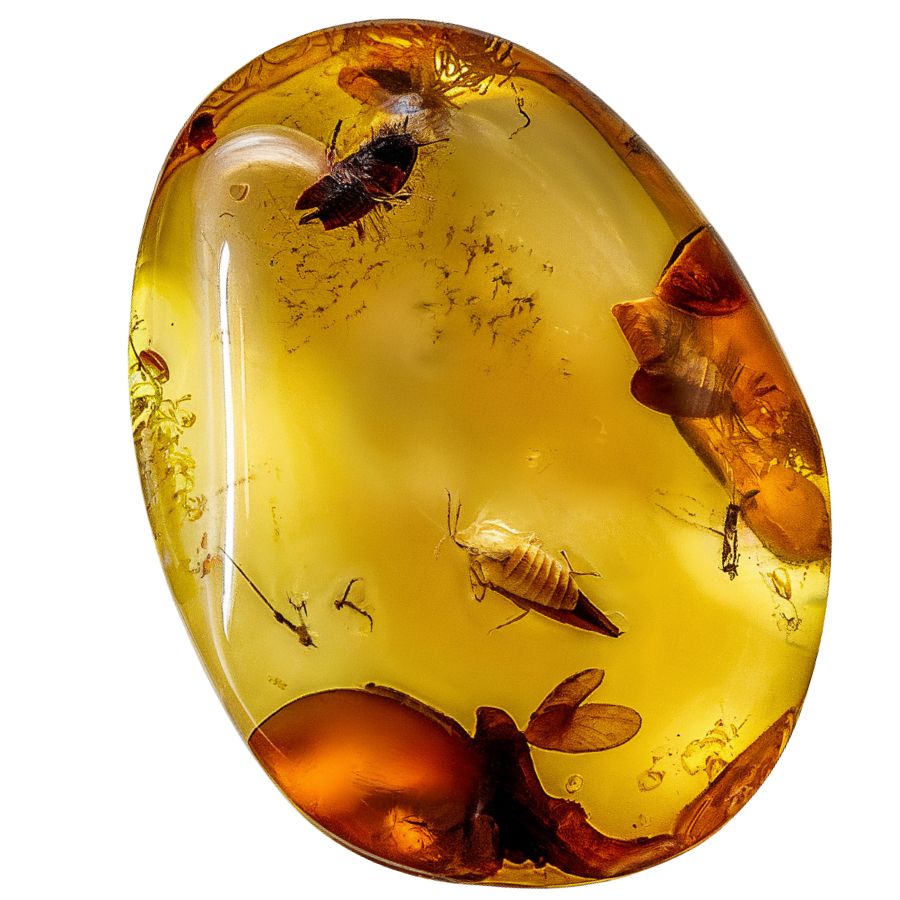
Mexican amber captivates with its rich palette of colors, from golden yellow to deep red, with occasional pieces showing rare pink or purple tints. Its extraordinary clarity allows detailed views of the ancient life preserved within, including perfectly preserved insects and plant materials.
Dating back 15-30 million years, this amber formed during a time when the region was covered in tropical forests. The resin came from an extinct species of tree related to the modern legume family, giving it distinct characteristics from other ambers.
The preservation quality of inclusions in Mexican amber is exceptional. Scientists have discovered new species of ancient insects in these time capsules, with some specimens showing details as fine as individual hair strands and wing patterns.
Oise Amber
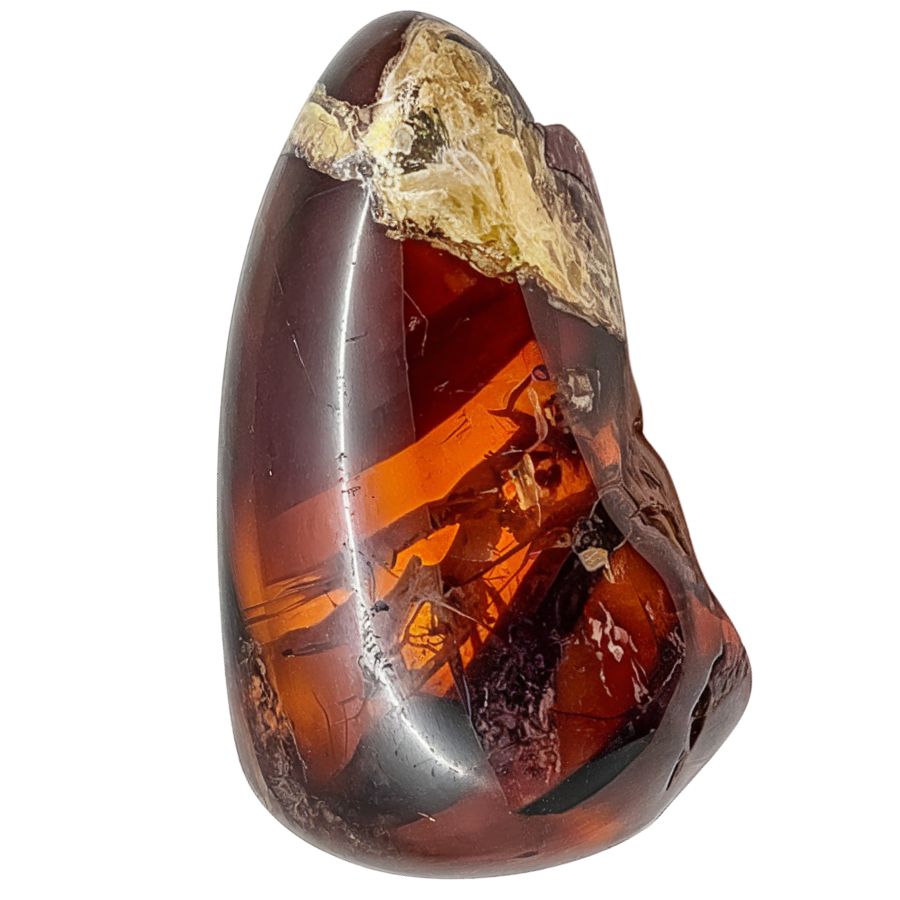
Oise amber, dating back 55-53 million years, shows remarkable transparency with subtle yellow to orange shades. Its clarity lets you see deep inside, where ancient insects and plants remain perfectly preserved since the early Eocene period.
The material has a unique density and structure that sets it apart. It’s generally thicker and more robust than other ambers, which has helped it preserve its contents so well over millions of years.
Scientists have identified over 20,000 different species in Oise amber specimens. These findings include rare insects and plants that help us understand what life was like during the early Cenozoic era.
The amber often contains multiple layers, showing different periods of resin flow. These layers create interesting patterns and sometimes trap air bubbles, making each piece unique.
Burmese Amber
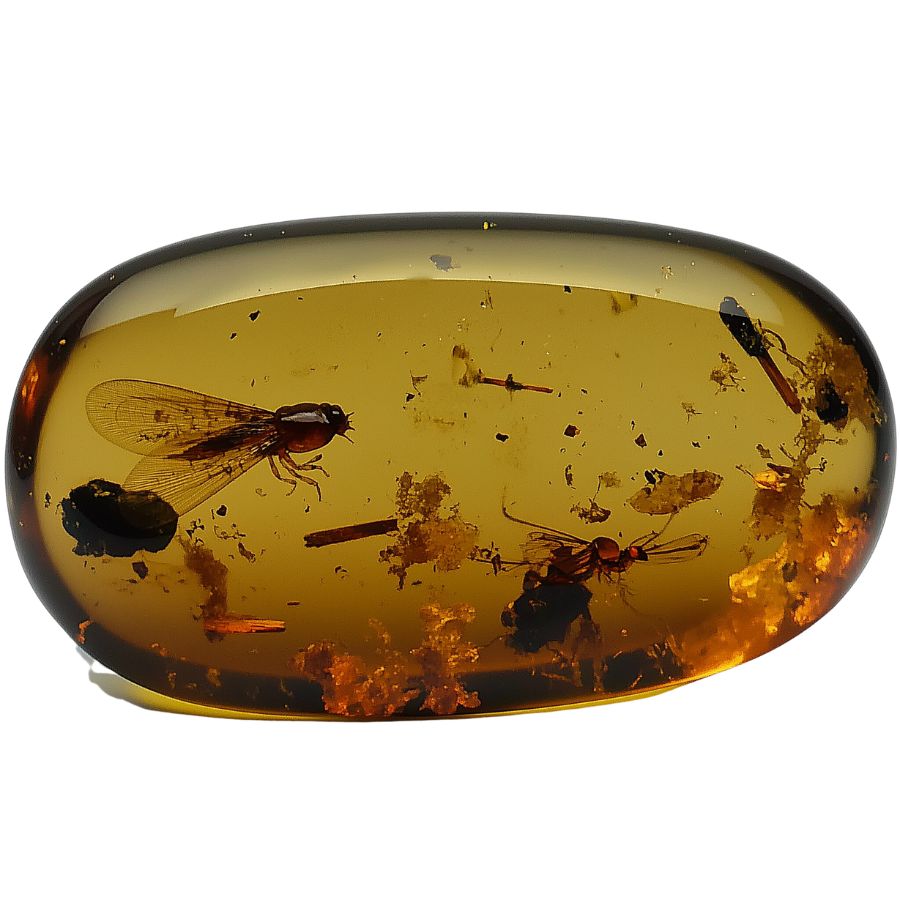
Burmese amber is super old, about 99 million years! It’s usually shaped like a flat disc and comes in reds and browns. A distinctive feature of Burmese amber is the presence of thin calcite veins that can measure between 1 mm to 4.5 mm.
Scientists have found amazing things inside, including baby birds, lizards, and even parts of dinosaurs with feathers still attached. The preservation quality is so good that they can see tiny details that are millions of years old.
The inclusions in this amber are often larger than those found in other types. You might find complete insects with all their body parts intact, or plant materials showing clear cell structures.
These preserved specimens help scientists understand what life was like during the Cretaceous period.
Sicilian Amber
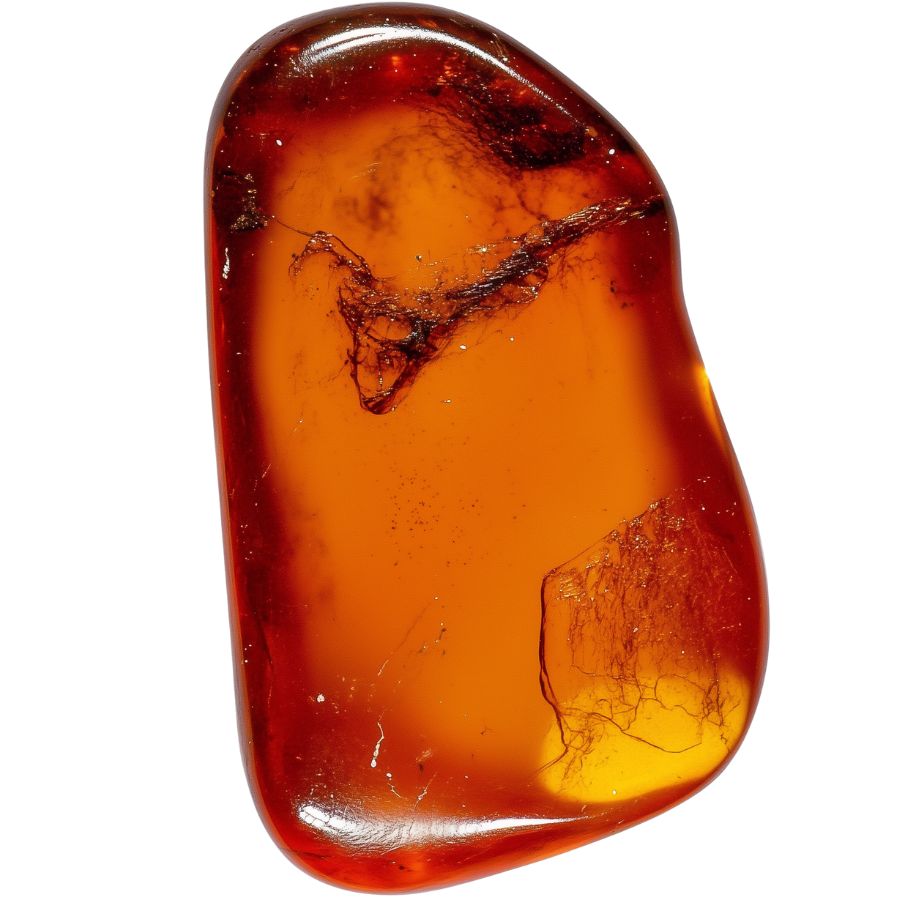
Sicilian amber shows off beautiful golden to yellowish-brown colors with exceptional clarity. The material has a uniform appearance and brilliant transparency that makes it stand out. You won’t find many air bubbles or cloudy areas in this amber.
This ancient material played a crucial role in early European trade, being used and valued about 2,000 years before Baltic amber became popular. Its age remains somewhat mysterious, but scientists believe it formed between 10 to 20 million years ago.
The formation process created amber with unique optical properties. When light passes through it, the amber seems to glow from within. This special characteristic made it highly prized throughout history.
What makes this amber special is its purity and brightness. Each piece typically shows consistent color throughout, unlike other ambers that might have varying shades or patterns. This uniformity gives it a distinct appearance that collectors can easily recognize.
Sumatran Amber
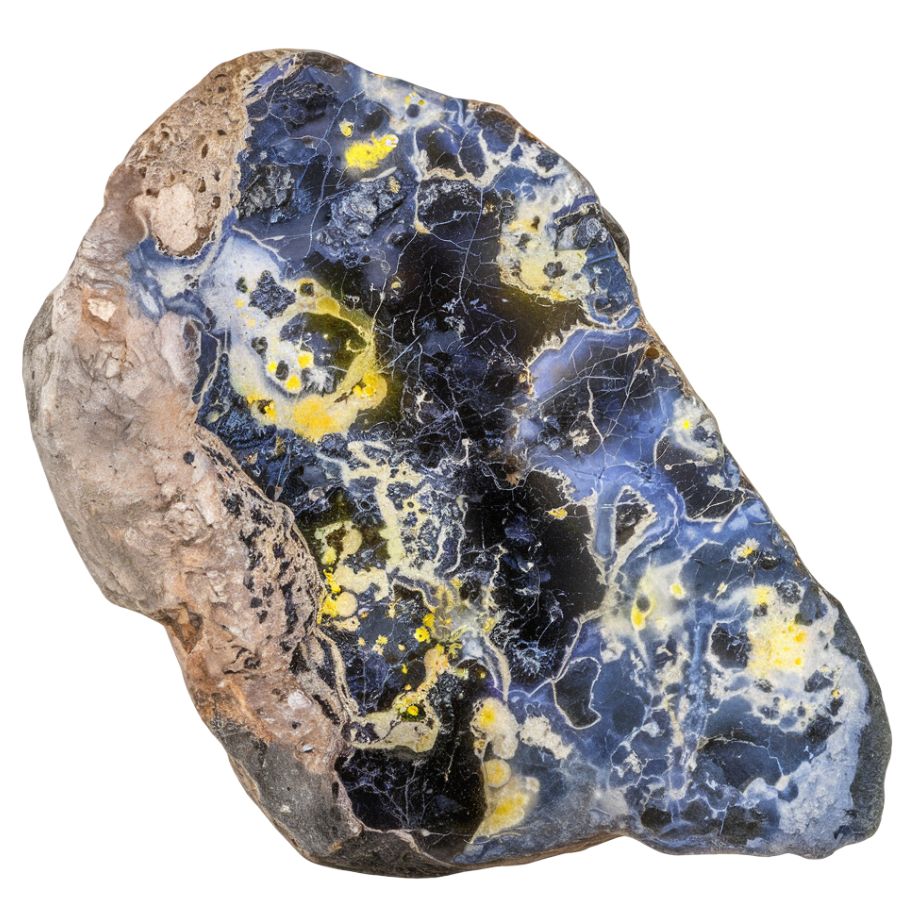
Sumatran amber comes in some really cool colors. You can find it in regular amber colors, but also in red, olive green, and even blue! The blue kind is super rare and special.
Here’s something awesome – when you shine a UV light on Sumatran blue amber, it glows! This happens because of special stuff inside the amber. Also when heated, some pieces even release a pleasant scent.
The blue Sumatran amber is famous because there are only two other places in the world where you can find blue amber. Scientists think this amber formed millions of years ago from trees that don’t exist anymore.
Collectors love Sumatran amber, especially the blue kind. It’s not just pretty – it also helps scientists learn about plants and animals that lived long ago.
Lebanese Amber
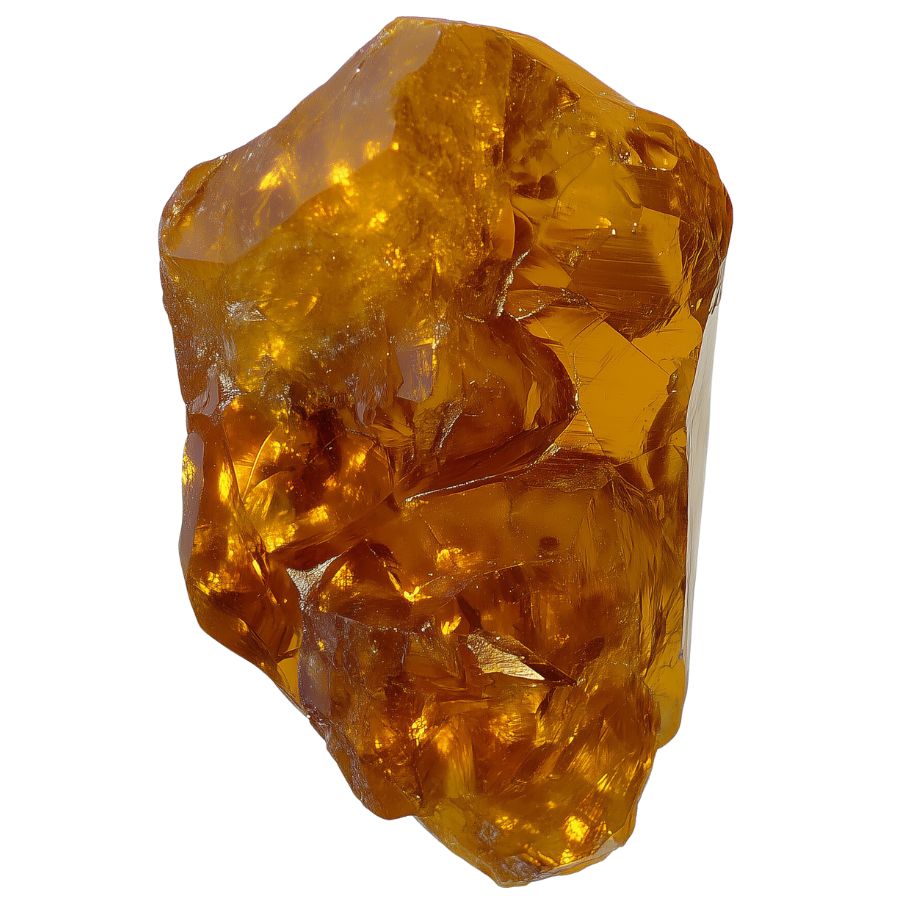
Lebanese amber shines with golden to yellowish-brown colors and remarkable clarity. The material is amazingly transparent, letting you see deep inside.
This 130-135 million-year-old amber stands out as one of the oldest known ambers in the world. Its age places it during a crucial time when flowering plants first appeared on Earth, capturing evidence of this major evolutionary transition.
The material contains some of the earliest known mosquitoes ever discovered, making it invaluable for understanding insect evolution. These mosquito specimens show how these insects adapted alongside the first flowering plants.
What’s particularly special about Lebanese amber is its role in documenting the rise of pollinating insects. The specimens inside show the beginning stages of insect-plant relationships that would later shape Earth’s ecosystems.
Bitterfeld Amber
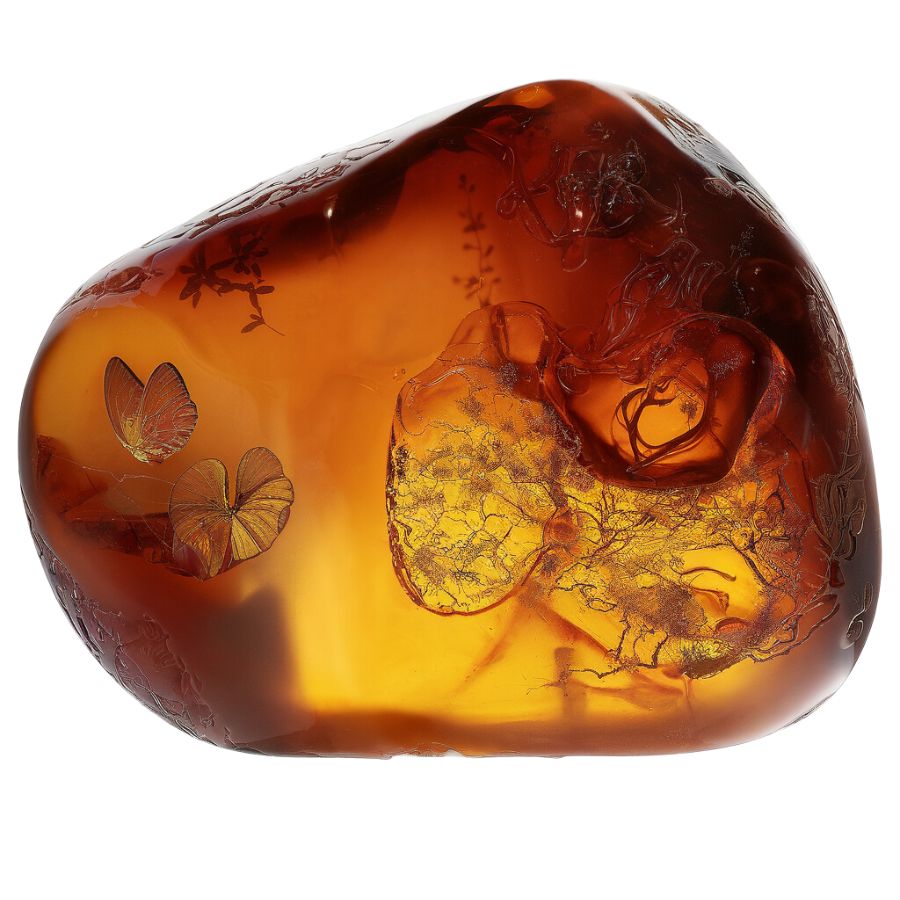
Bitterfeld amber displays warm yellow to brown colors with fascinating transparency. This amber has distinct chemical markers that indicate it came from a different type of ancient forest than those that produced other well-known ambers.
The trapped creatures inside tell a different story than Baltic or Dominican amber. Scientists have found species that don’t appear anywhere else, suggesting this area had its own distinct ecosystem millions of years ago.
The material shows evidence of a warmer climate period in ancient Europe. The preserved plants and insects indicate environmental conditions quite different from what other European ambers reveal about their time periods.
Recent studies of this amber have challenged previous theories about amber formation in Europe, suggesting multiple independent amber-producing forests existed rather than just one major source.
Caribbean Amber
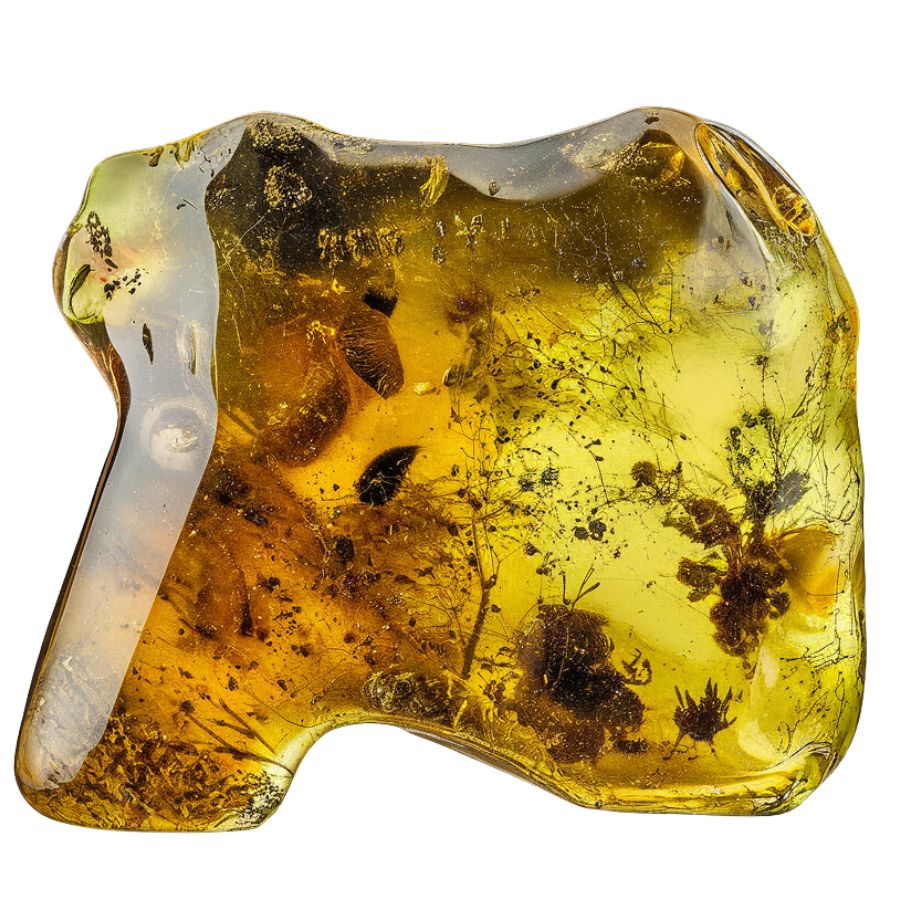
Caribbean amber is famous for its exceptional clarity and brilliant colors. You can find pieces in yellow, honey, and red shades. Espeically the rare blue variety found in Caribbean amber is created by a unique interaction between light and hydrocarbons trapped inside.
These pieces contain tropical species that reveal details about ancient Caribbean rainforests. The preserved creatures are distinctly different from those found in amber from other regions, showing how island ecosystems evolved separately.
The material offers insights into species that existed before the Caribbean islands separated from mainland America. This helps scientists understand how island isolation affects evolution.
The preservation quality is so exceptional that scientists have discovered new species of extinct animals that weren’t known from any other fossil sources, including unique types of lizards and spiders.
What Rough Amber Looks Like
Before you get excited about finding amber, let’s dive into how to spot this fascinating fossilized tree resin in its natural, unpolished state.
Check for a Glassy or Waxy Luster
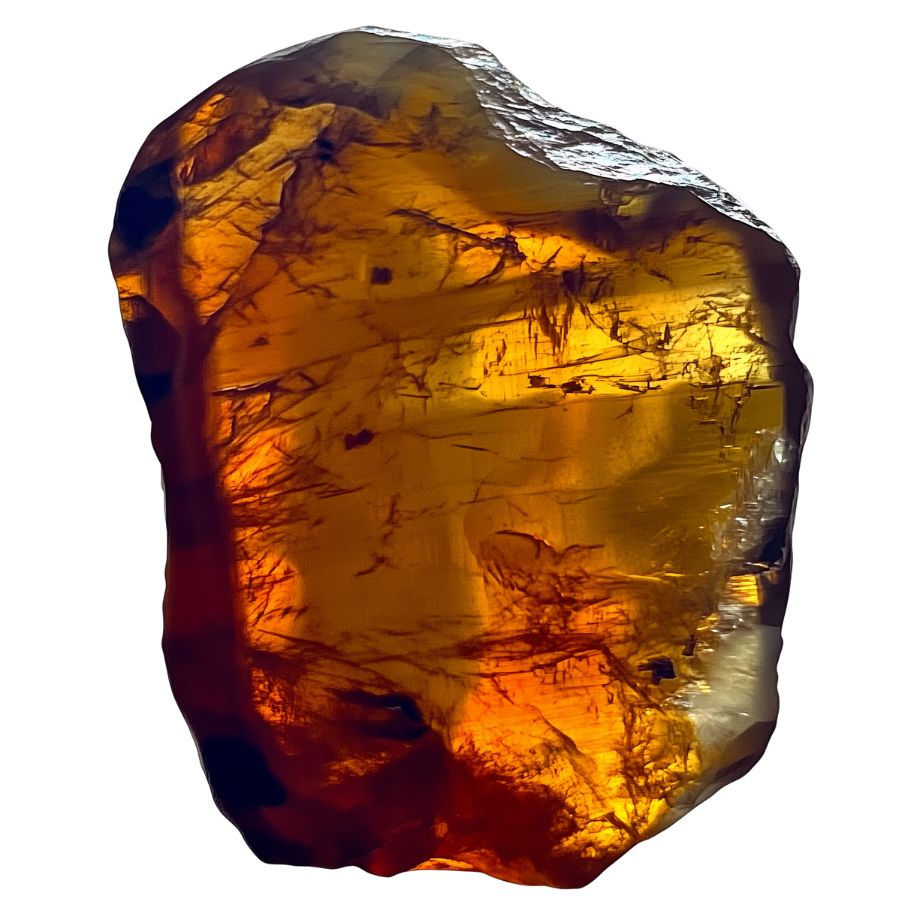
Raw amber typically has a subtle, waxy sheen – quite different from regular rocks. It’s not super shiny like polished amber, but it’s got this unique greasy-looking surface.
If you spot something that looks like hardened honey or tree sap, you might be onto something! Even in its rough state, amber often has translucent edges when held up to light.
It’s incredibly important to know what you’re looking at and to have a good reference guide. So many rockhounds are throwing away pieces of amber and other incredible finds without realizing it!
If you want REAL results finding incredible rocks and minerals you need one of these 👇👇👇
Finding the coolest rocks in isn’t luck, it's knowing what to look for. Thousands of your fellow rock hunters are already carrying Rock Chasing field guides. Maybe it's time you joined the community.
Lightweight, mud-proof, and packed with clear photos, it’s become the go-to tool for anyone interested discovering what’s hidden under our red dirt and what they've already found.
Join them, and make your next rockhounding trip actually pay off.
What makes it different:
- 📍 Find and identify 140 incredible crystals, rocks, gemstones, minerals, and geodes across the USA
- 🚙 Field-tested across America's rivers, ranchlands, mountains, and roadcuts
- 📘 Heavy duty laminated pages resist dust, sweat, and water
- 🧠 Zero fluff — just clear visuals and straight-to-the-point info
- ⭐ Rated 4.8★ by real collectors who actually use it in the field
Look for the Distinctive Colors
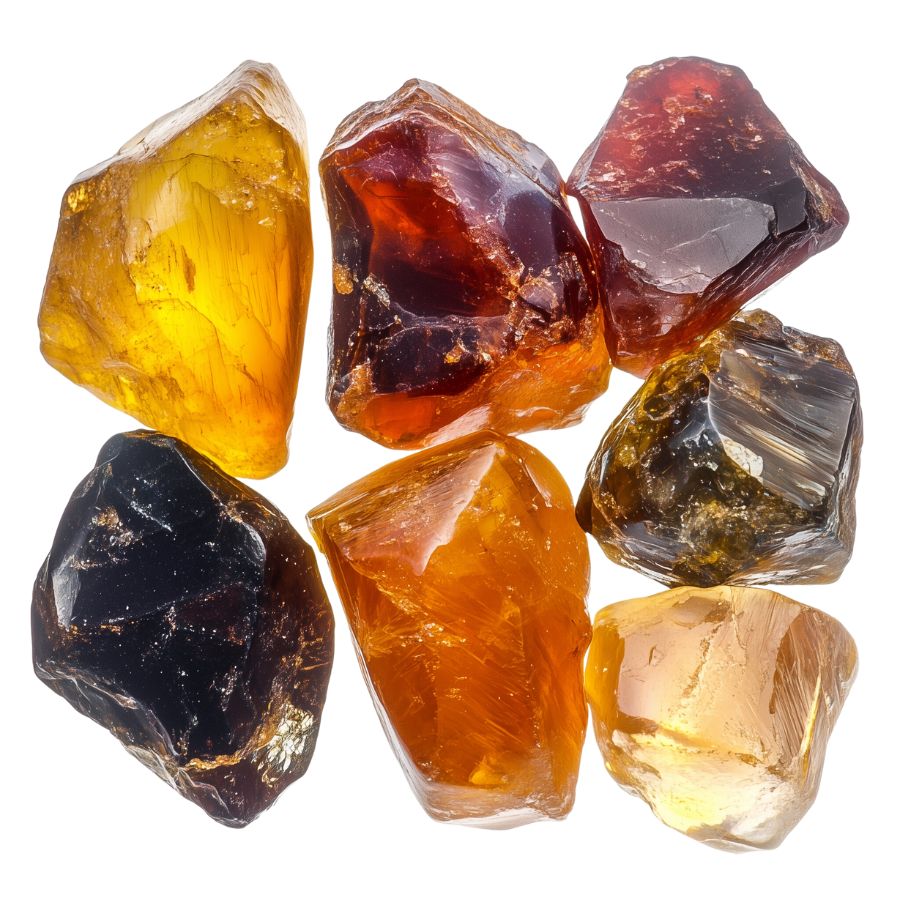
Natural amber comes in an amazing range of hues, but most rough pieces are a cloudy yellow-orange or butterscotch color. Some pieces might have whitish surface oxidation (we call it “amber cortex”).
You might also spot deeper cognac browns or even rare blue pieces. Don’t be fooled by the muddy exterior – that’s totally normal for rough amber!
Assess the Density and Weight
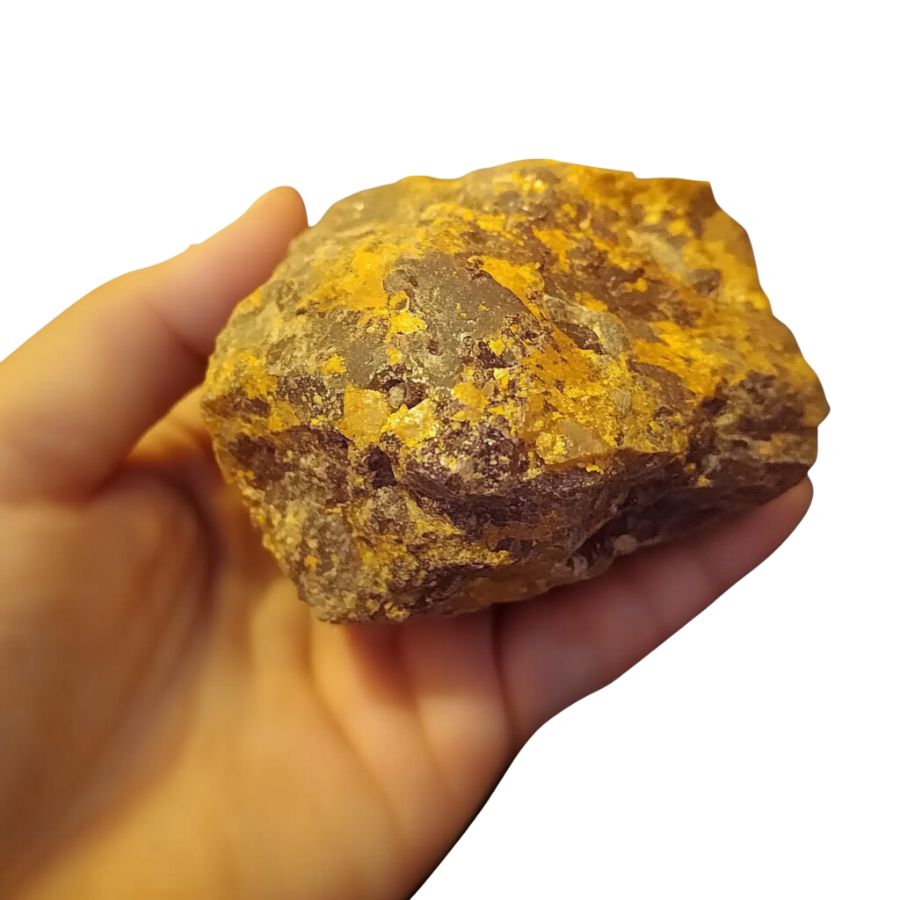
Here’s a cool trick: Amber feels surprisingly light for its size! Pick it up – if it feels lighter than a regular rock of the same size, you might have amber.
It’s about as dense as sea salt, which means it’ll float in super salty water. Unlike most stones, it’ll feel warm to touch almost immediately.
A Quick Request About Collecting
Always Confirm Access and Collection Rules!
Before heading out to any of the locations on our list you need to confirm access requirements and collection rules for both public and private locations directly with the location. We haven’t personally verified every location and the access requirements and collection rules often change without notice.
Many of the locations we mention will not allow collecting but are still great places for those who love to find beautiful rocks and minerals in the wild without keeping them. We also can’t guarantee you will find anything in these locations since they are constantly changing.
Always get updated information directly from the source ahead of time to ensure responsible rockhounding. If you want even more current options it’s always a good idea to contact local rock and mineral clubs and groups
Where to Look for Amber
Amber hunting is like a treasure hunt! Here’s where you’re most likely to find these golden gems.
Along Coastal Areas and Beaches
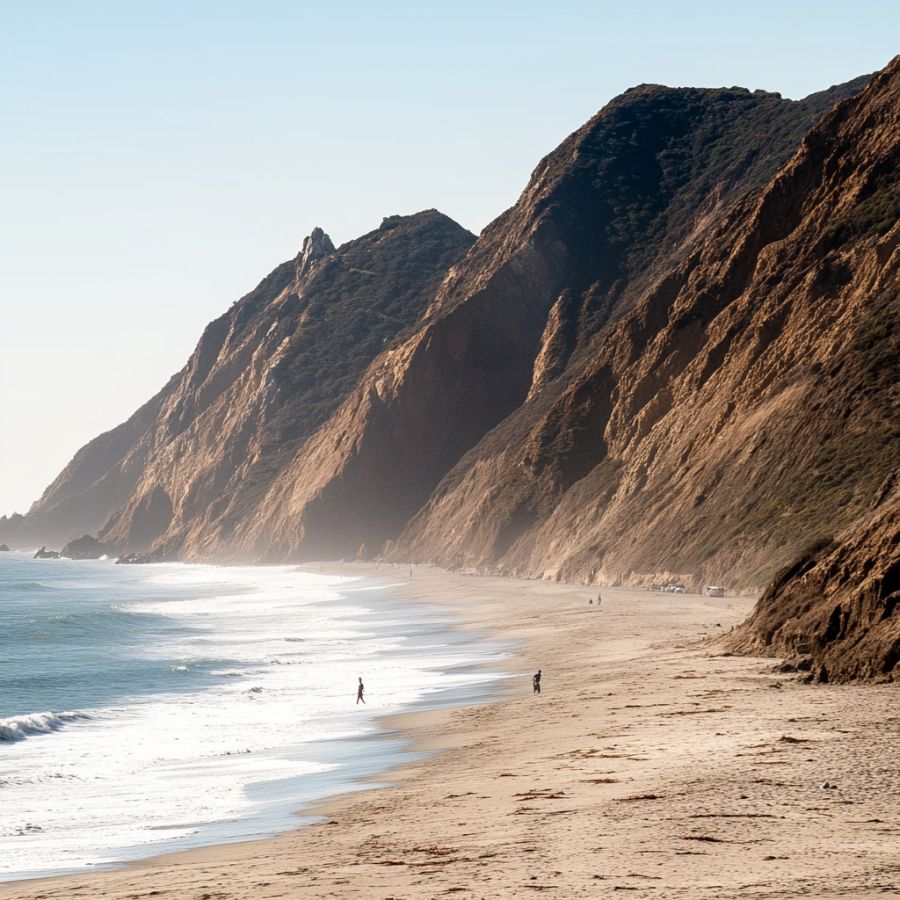
Hit the beaches after storms – that’s when amber tends to wash up! Focus on areas where you spot lots of seaweed or driftwood piles, as amber often gets caught in these natural collection points.
The best spots are usually where the tide leaves a dark line of debris on the sand, especially after strong waves have stirred up the seafloor and brought ancient deposits to the surface.
Investigate River Banks and Gravel Bars
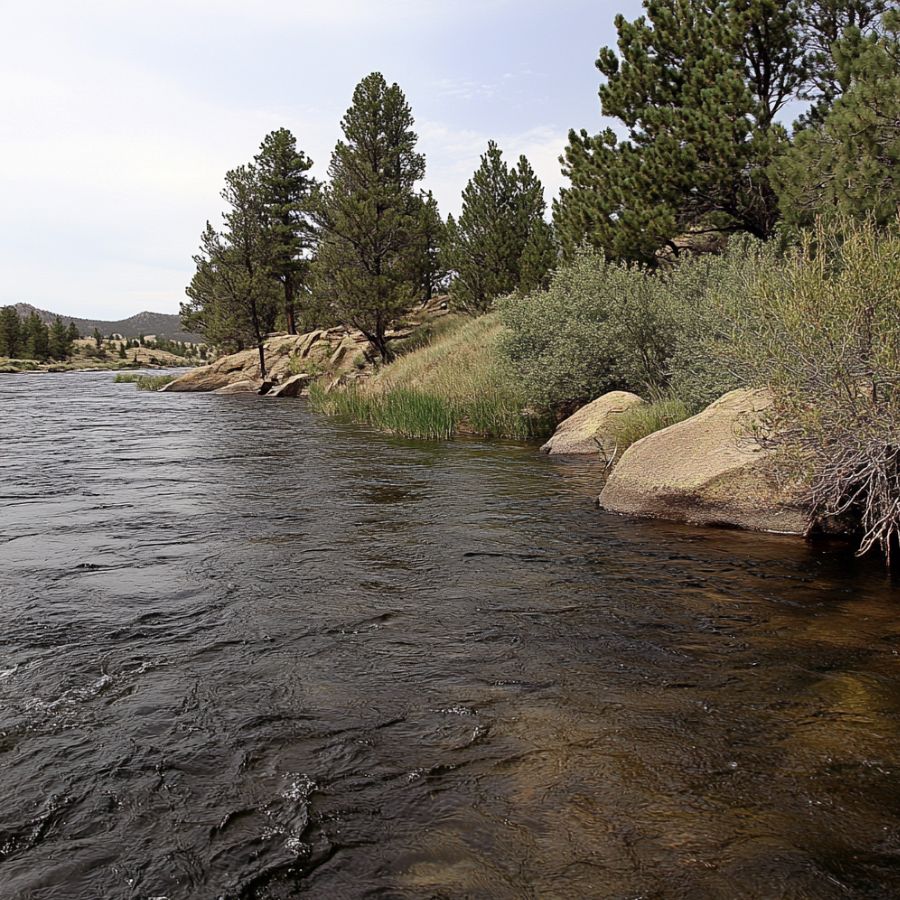
Rivers are nature’s sorting machines! Check out gravel bars and sandy banks, especially downstream from eroding cliffs. Look where the water slows down and deposits lighter materials.
The best time to search is after floods when rivers have churned up new material and redeposited it along their banks.
Clay and Sand Deposits
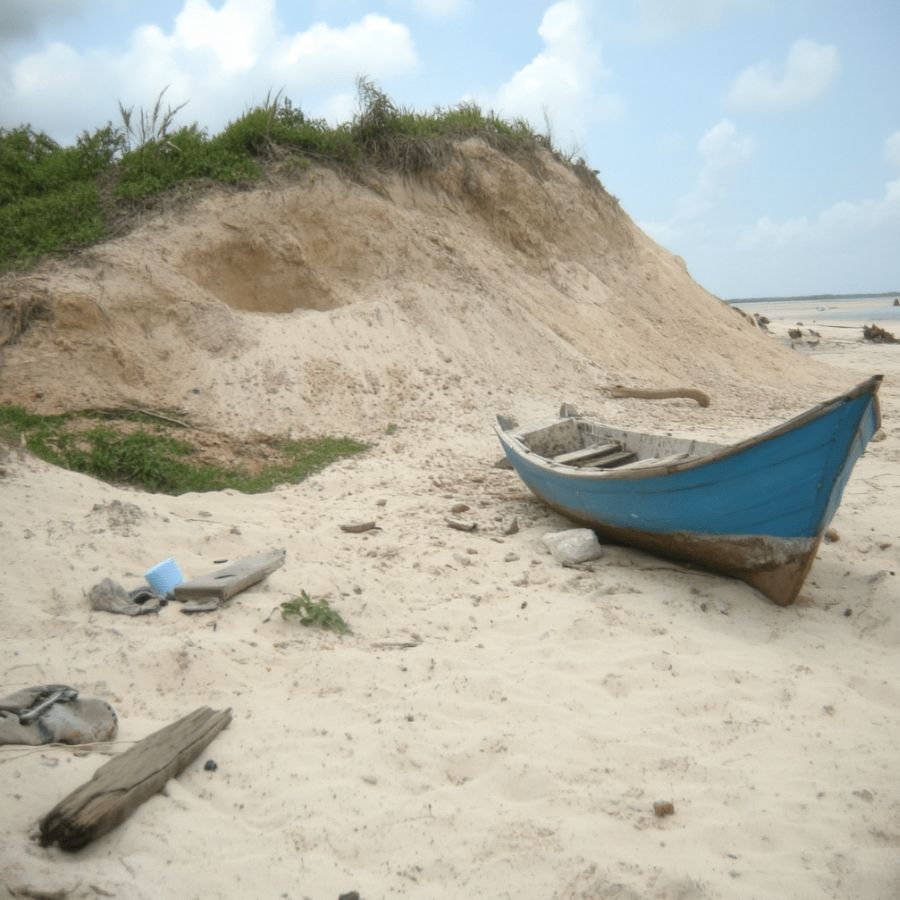
Search in areas with exposed clay banks, particularly those with dark, organic-rich layers that indicate ancient forest beds.
Sandy areas near clay deposits are prime spots because water naturally sorts materials by weight, often concentrating amber in specific layers. Look carefully after heavy rains when new material gets exposed.
Construction Sites and Quarries
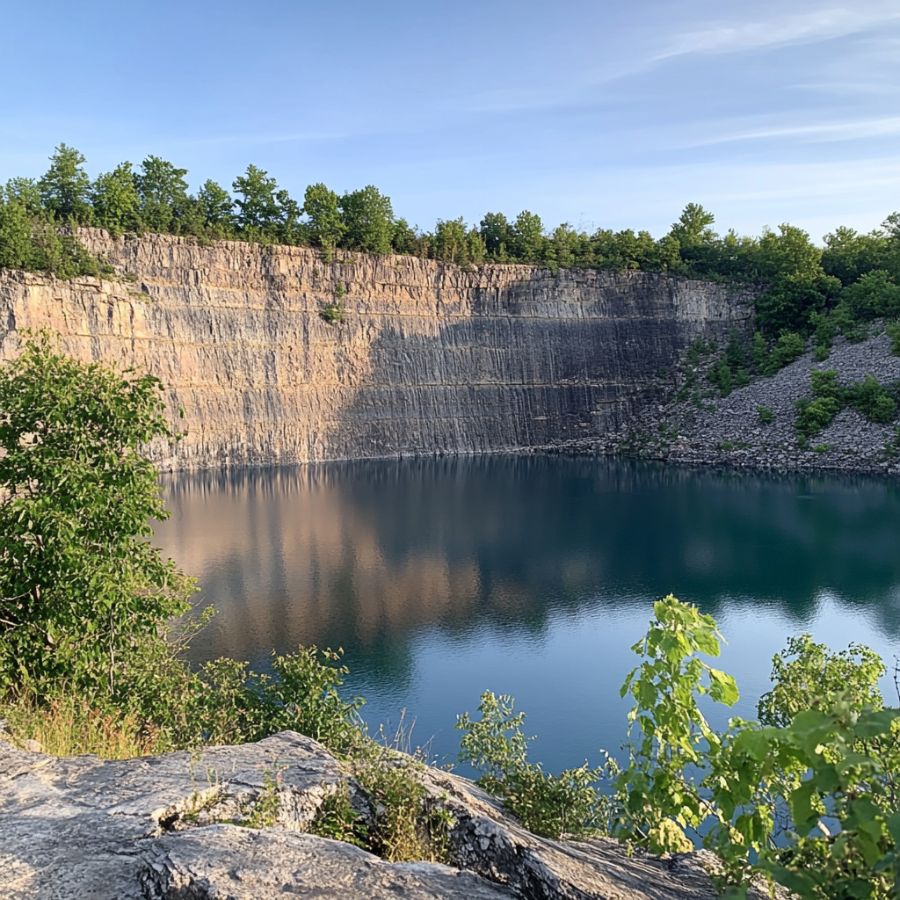
With proper permission, check out newly excavated areas, especially those cutting through sedimentary layers.
Pay special attention to sandy or clayey layers that might represent ancient coastlines or forest beds. These disturbed areas often expose deposits that have been buried for millions of years.
The types of Amber you can find around the state

Washington State is home to beautiful amber, mostly golden or honey-colored, formed from tree resin that’s millions of years old. Some pieces may trap small creatures or plants inside, making them even more fascinating.
Though not as famous as Baltic or Dominican amber, Washington’s amber still shines in shades of brown, yellow, and red. Found mostly along the coast, it’s a special treasure that often holds tiny fossils from the past.
Some Great Places To Start
These are some of the places where you can find amber around the state.
Black Rock Point

Black Rock Point is a great spot for finding amber with its stunning views and rocky shoreline. The waves erode the rocks, revealing amber that has been hidden for ages, especially after storms when the tides are lower.
Look in the tide pools and along the water’s edge, where amber often collects. Amber pieces are smooth and shiny, typically in gold, brown, or honey colors, so be sure to wear sturdy shoes and take your time searching carefully.
Wenatchee

Wenatchee, in central Washington, is a fantastic place to search for amber. The area’s old sedimentary layers along the Columbia River and surrounding mountains are perfect for finding pieces of ancient tree resin.
Look in disturbed soil along riverbanks, creek beds, or rocky ground, where amber often gets exposed. After rain is a good time to search, as the wet ground makes amber easier to spot, but remember to wear sturdy shoes and bring a small bag to collect your finds.
Tiger Mountain

Tiger Mountain, near Issaquah, is a top spot for amber hunting. Its forests and steep slopes hide plenty of amber, especially after rain or in the fall when the ground is softer.
Search in areas with disturbed soil, like creek beds, stream banks, or places where landslides have occurred. Amber is small, smooth, and comes in shades of gold, brown, or honey, so pay close attention to the dirt and rocks near water.
Icicle Creek
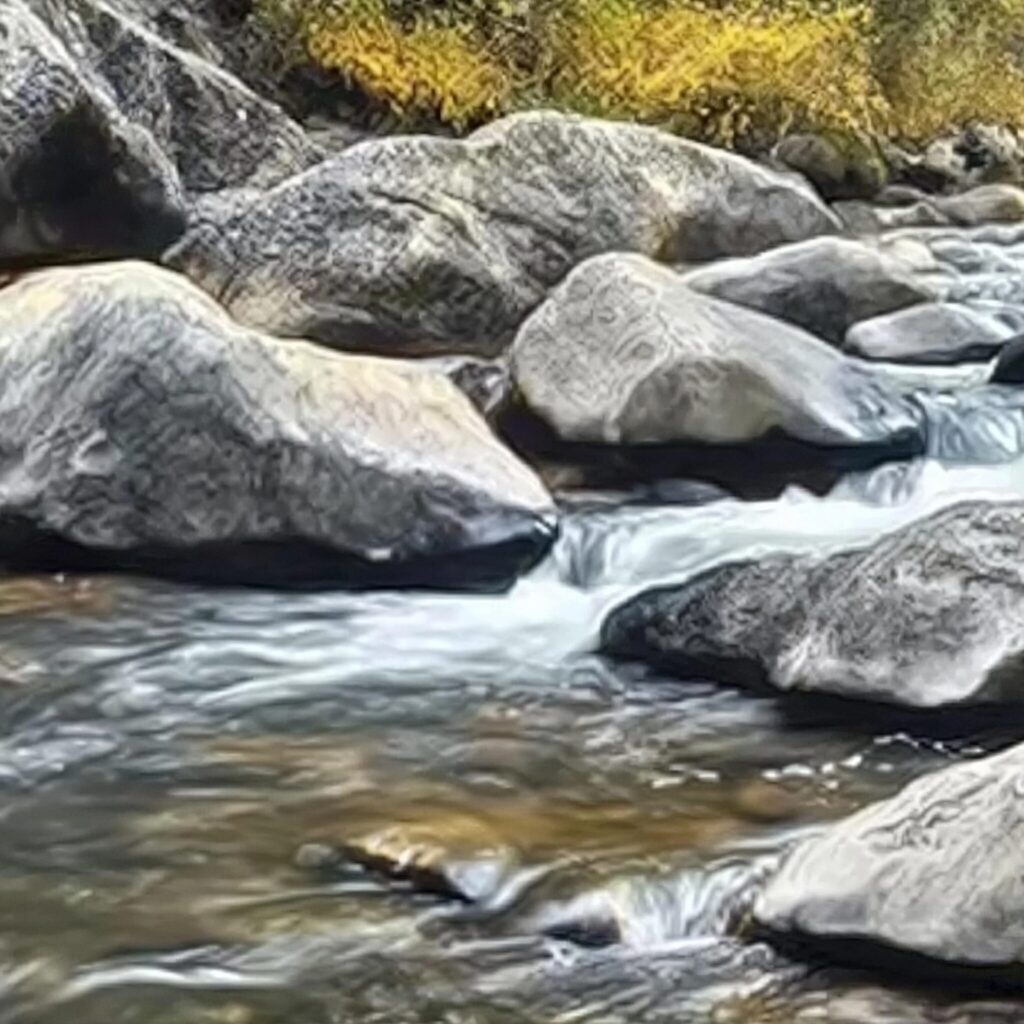
Icicle Creek in Washington is a great spot to search for amber, a golden fossilized tree resin. The creek’s streambeds and gravel deposits, surrounded by forests, can hide small pieces of amber carried by the water.
Focus on the gravel bars and shallow areas where the water slows down, especially after rain. Using a small mesh screen can help sift through the gravel, making it easier to find smooth, golden-brown pieces of amber.
Entiat River

The Entiat River in Washington is a great place to search for amber, a golden, fossilized tree resin. The river flows through a forested area, and small pieces of amber can often be found in the gravel along the banks, carried by the current.
To find amber, focus on gravel bars and areas where the water slows down, like shallow pools. After rainfall, new pieces may wash up, so visiting during or after wet weather increases the chances of finding amber. A small mesh screen helps sift through the gravel, making it easier to spot the golden-brown pieces.
Places Amber has been found by county
After discussing our top picks, we wanted to discuss the other places on our list. Below is a list of the additional locations where we have succeeded, along with a breakdown of each place by county.
| County | Location |
| Chelan | Chiwaukum Creek |
| Clallam | Lake Crescent Shores |
| Clallam | Elwha River Basin |
| Clallam | Dungeness Spit |
| Clark | Lacamas Creek Area |
| Clark | Washougal River |
| Clark | Mill Creek |
| Cowlitz | Toutle River |
| Cowlitz | Spirit Lake |
| Cowlitz | Castle Rock Area |
| Ferry | Republic Fossil Beds |
| Ferry | Sherman Pass Area |
| Ferry | Boulder Creek |
| Grant | Banks Lake Basin |
| Grant | Lower Grand Coulee |
| Grant | Dry Falls Region |
| Grays Harbor | Ocean Shores Beach |
| Grays Harbor | Copalis Beach |
| Grays Harbor | Moclips Beach |
| Jefferson | Hoh Rain Forest Basin |
| Jefferson | Ruby Beach Shores |
| King | Rattlesnake Ridge |
| King | Snoqualmie River Area |
| King | Cedar River |
| Kittitas | Ellensburg Canyon |
| Kittitas | Cle Elum Ridge |
| Kittitas | Yakima River Canyon |
| Klickitat | Columbia River Basalt Areas |
| Klickitat | Goldendale Fossil Beds |
| Klickitat | Swale Canyon |
| Lewis | Toutle River Tributaries |
| Lewis | Mount Adams Foothills |
| Lincoln | Sprague |
| Ferry | Republic |
| Ferry | Kettle River |
| Okanogan | Omak |
| Okanogan | Tonasket |
| Okanogan | Methow Valley |
| Okanogan | Lost River Area |
| Pierce | Carbon River Valley |
| Pierce | Puyallup River Basin |
| Pierce | White River |
| Skagit | MSkagit River |
| Skagit | Cascade River |
| Skagit | Sauk Mountain Area |
| Stevens | Colville |
| Stevens | Spokane River (near Kettle Falls) |

